3.4 Habituation and Sensitization
1/27
There's no tags or description
Looks like no tags are added yet.
Name | Mastery | Learn | Test | Matching | Spaced |
|---|
No study sessions yet.
28 Terms
habituation
response to a stimulus weakens after repeated exposures
implicit
short or long term
short term habituation example
after repeated exposure to loud sound which initially startled it, the rat stops responding to sound
long term habituation
ignoring the sound of trains after living there for a few days or weeks
Sensitization
response to a stimulus strengthens after a noxious stimulus is co-applied
presentation of strong stimulus enhances response to other stimuli
example of sensitization
a loud cargo train goes by your house, startling you, and for the rest of the day, you find that you are startled by the normal passenger trains rolling by
how is sensitization different from classical conditioning
classical conditioning creates a NEW behavioral response to a neutral stimulus while…
sensitization strengthens an ESTABLISHED behavioral response
Aplysia (marine snail)
model used to study simple forms of memory
exhibits gill withdrawal reflex
Gill withdrawal reflex
when siphon touched/shocked
gill retracts in response
pathway for gill withdrawal reflex
siphon → sensory neuron → gill → motor neuron
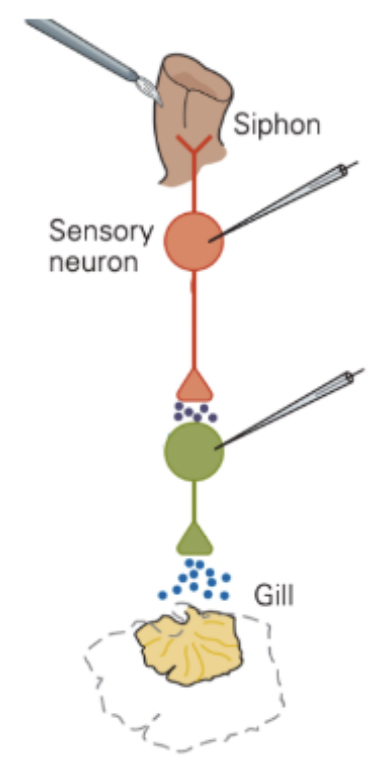
How might we test the hypothesis that habituation is due to reduced excitation of sensory neurons
keep stimulating/activating the mechanosensors on the sensory nerve
BUT BLOCK ACTION POTENTIALS IN THE NERVE
nerve blocked 10th-18th stimuli
weak to no response
nerve unblocked
strong response
DOES NOT INDUCE HABITUATION
if that’s where habituation is happening, then you’d still expect a weak response on the 20th stimulus.
sensory neuron refreshed and ready to signal
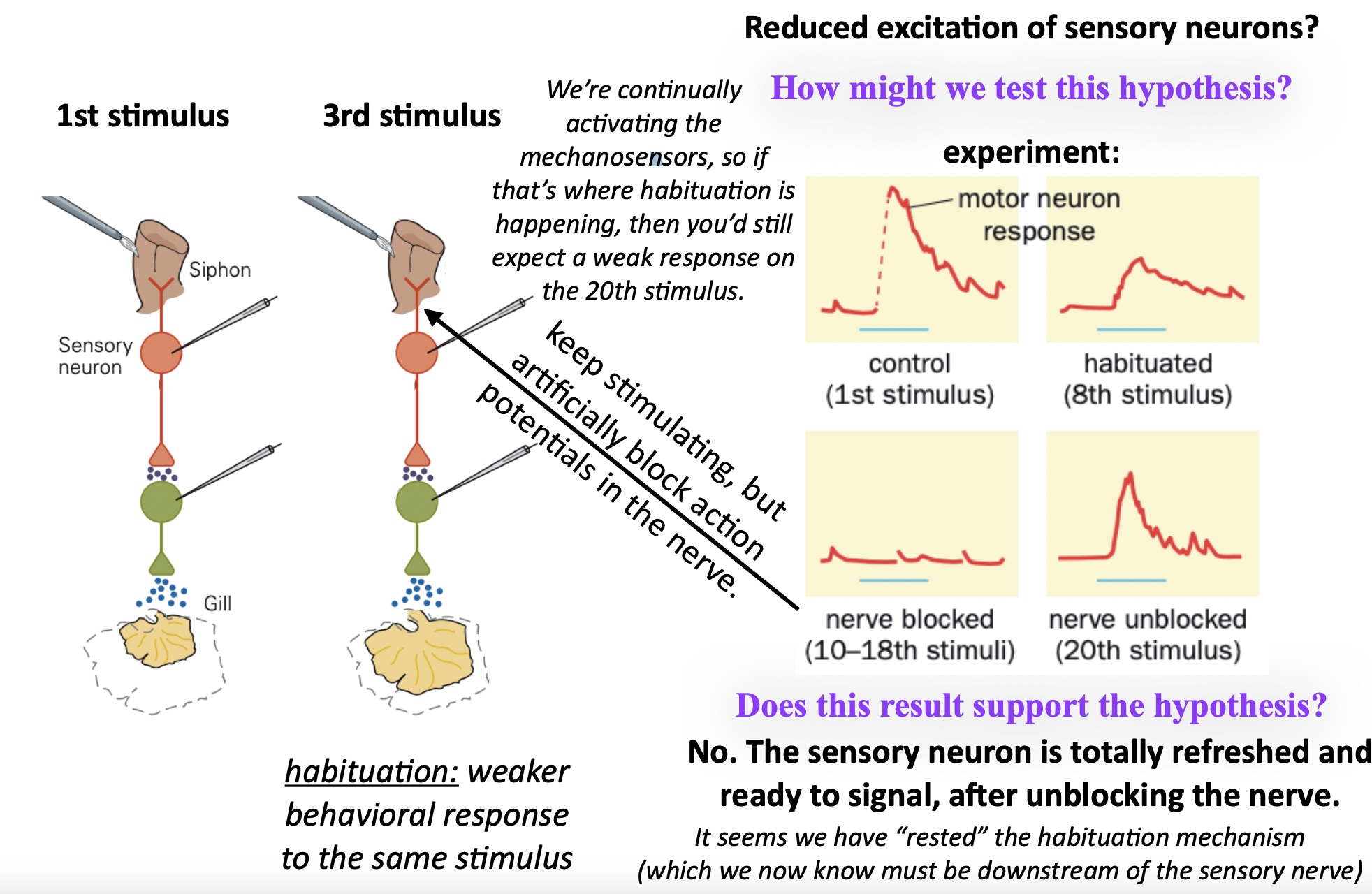
Short-term habituation in Aplysia
Repeated stimulation of the gill results in less and less contraction of the gill (weaker gill withdrawal reflex), i.e., it exhibits a weaker behavioral response to same stimulus
Reduced synaptic transmission at neuromuscular junction?… Muscle fatigue? How to test this hypothesis?
Directly stimulate the motor neuron
No. The NMJ and muscle do not habituate.
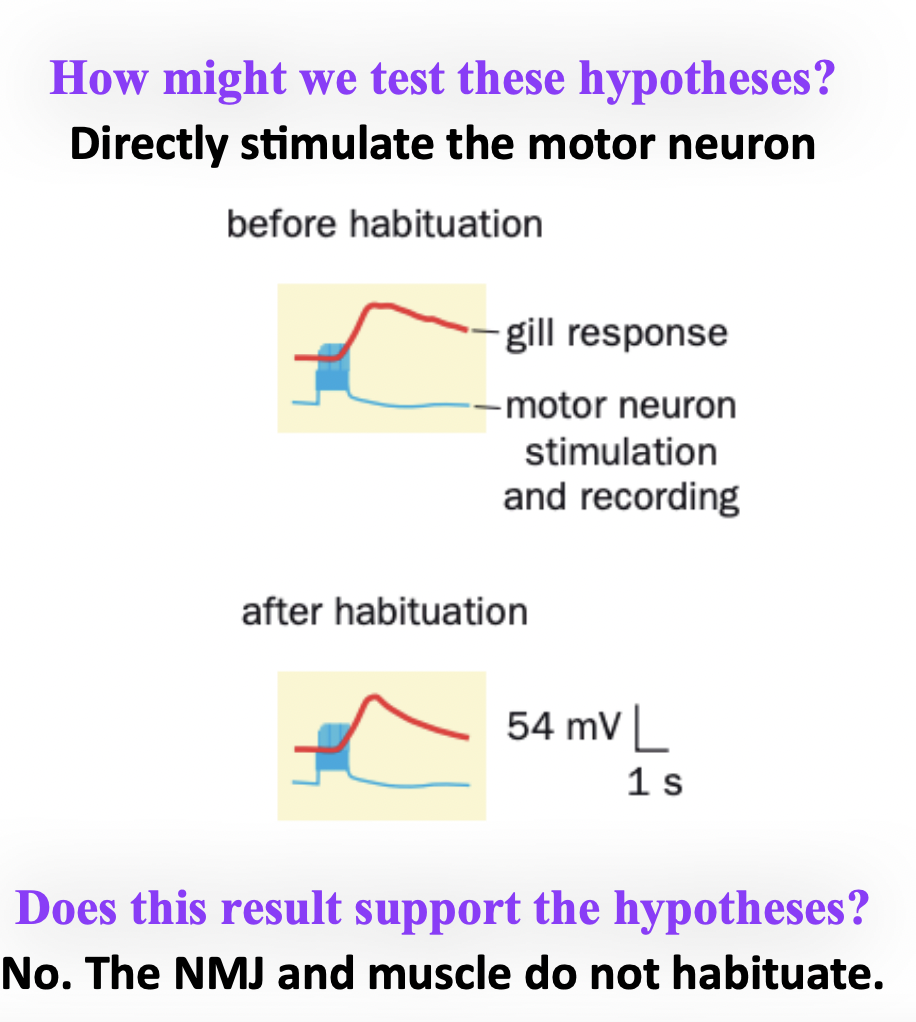
Could gill withdrawal reflex be due to reduced synaptic transmission from sensory neurons to motor neurons?
directly stimulate sensory neuron
Yes!
We artificially stimulate sensory neuron and the effect on motor neuron is weaker and weaker
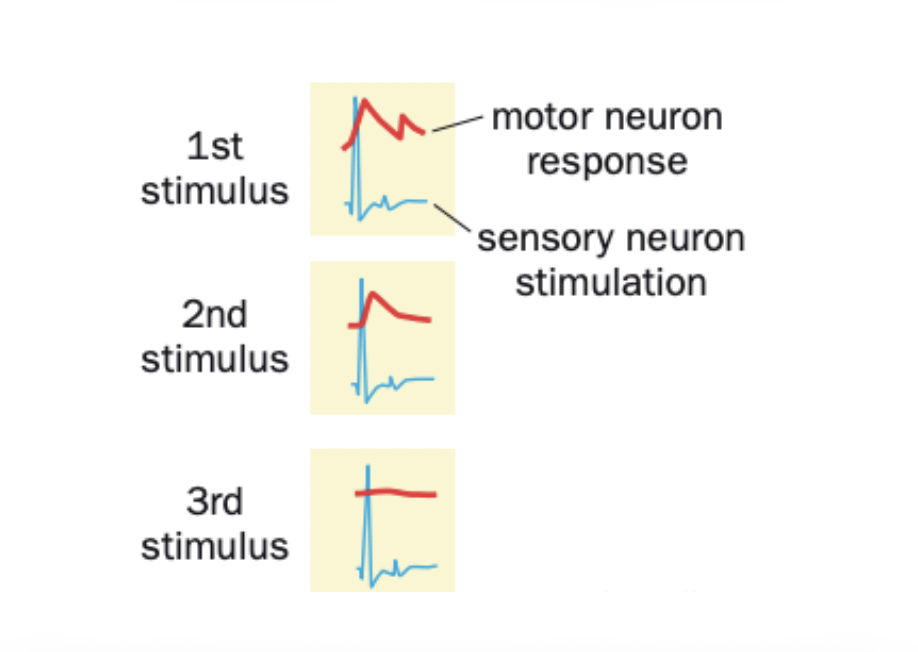
How does decreased transmitter release from sensory neuron induce habituation
presynaptic action potentials in sensory neuron is unchanged
EPSPs motor neuron decreases
thus reduced gill behavior
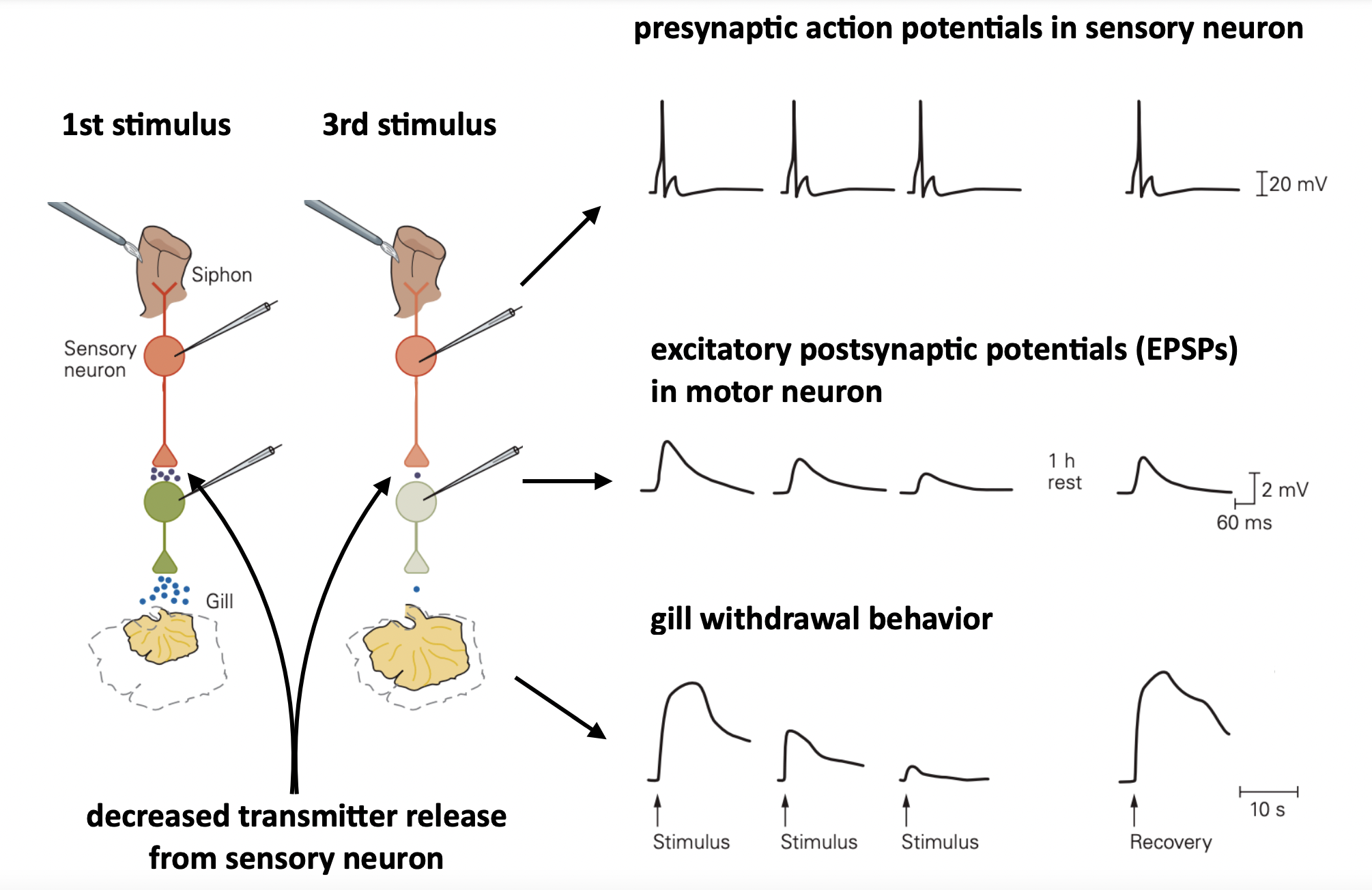
Long-term habituation in the gill-withdrawal reflex
loss of sensory-motor synapses in circuit
fewer sensory neurons synapsing onto motor neurons
4 sessions of 10 stimuli
separated by several hours to 1 day
long term habituation
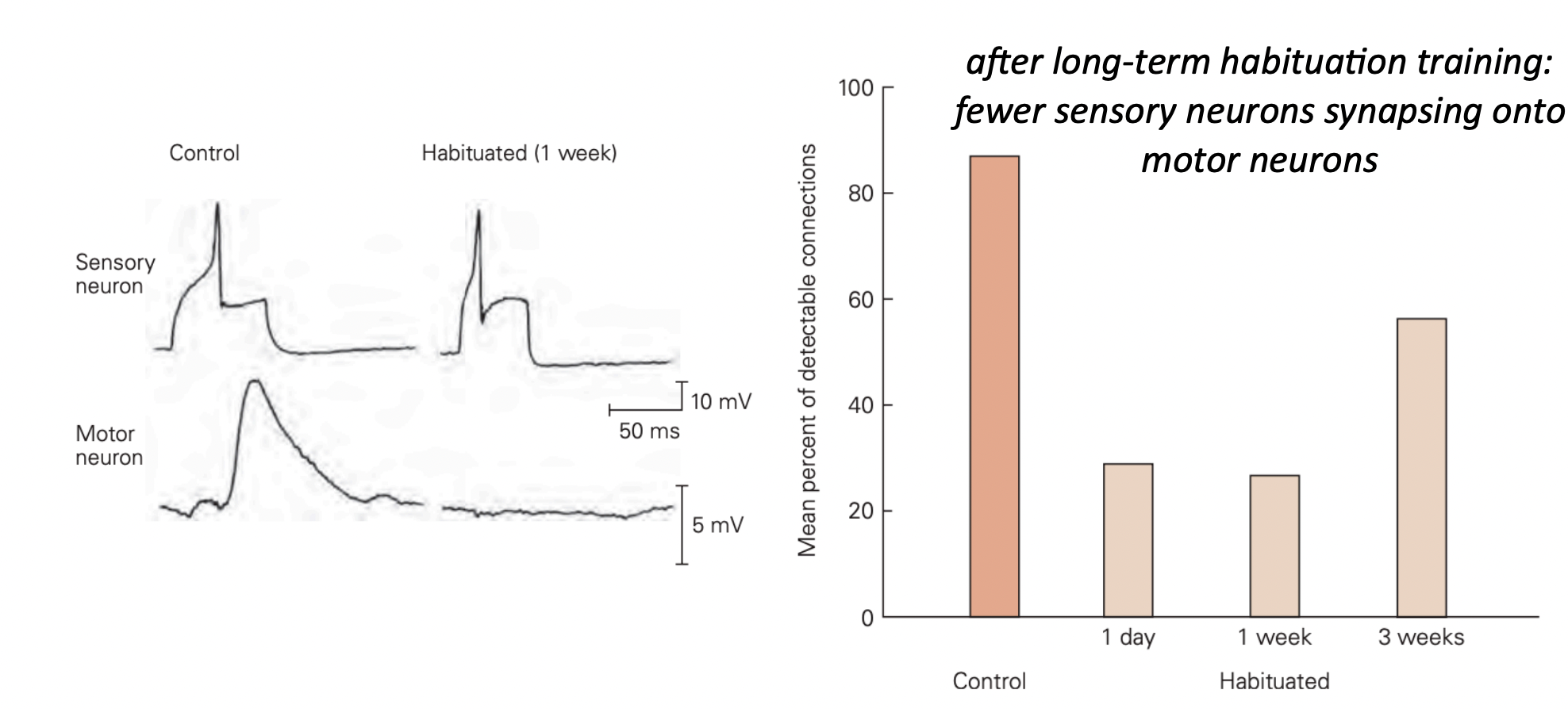
short term learning vs. long term learning
short term learning involves changes in the strength of existing synapses
long term learning involves structural changes
adding or removing synapses
sensitization in aplysia
After shocking its tail, gill withdrawal is much more severe compared to the same stimulus before the shock
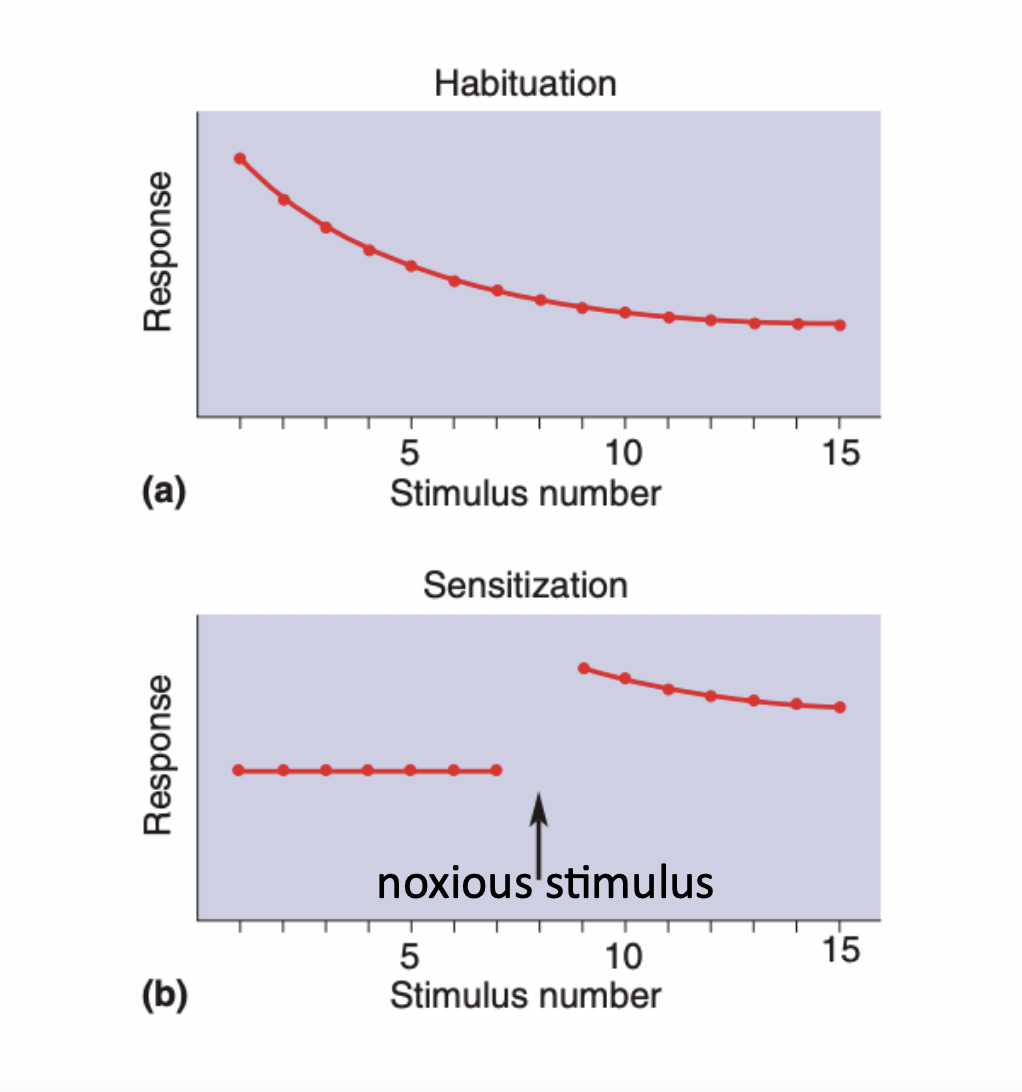
short term vs long term sensitization (graph)
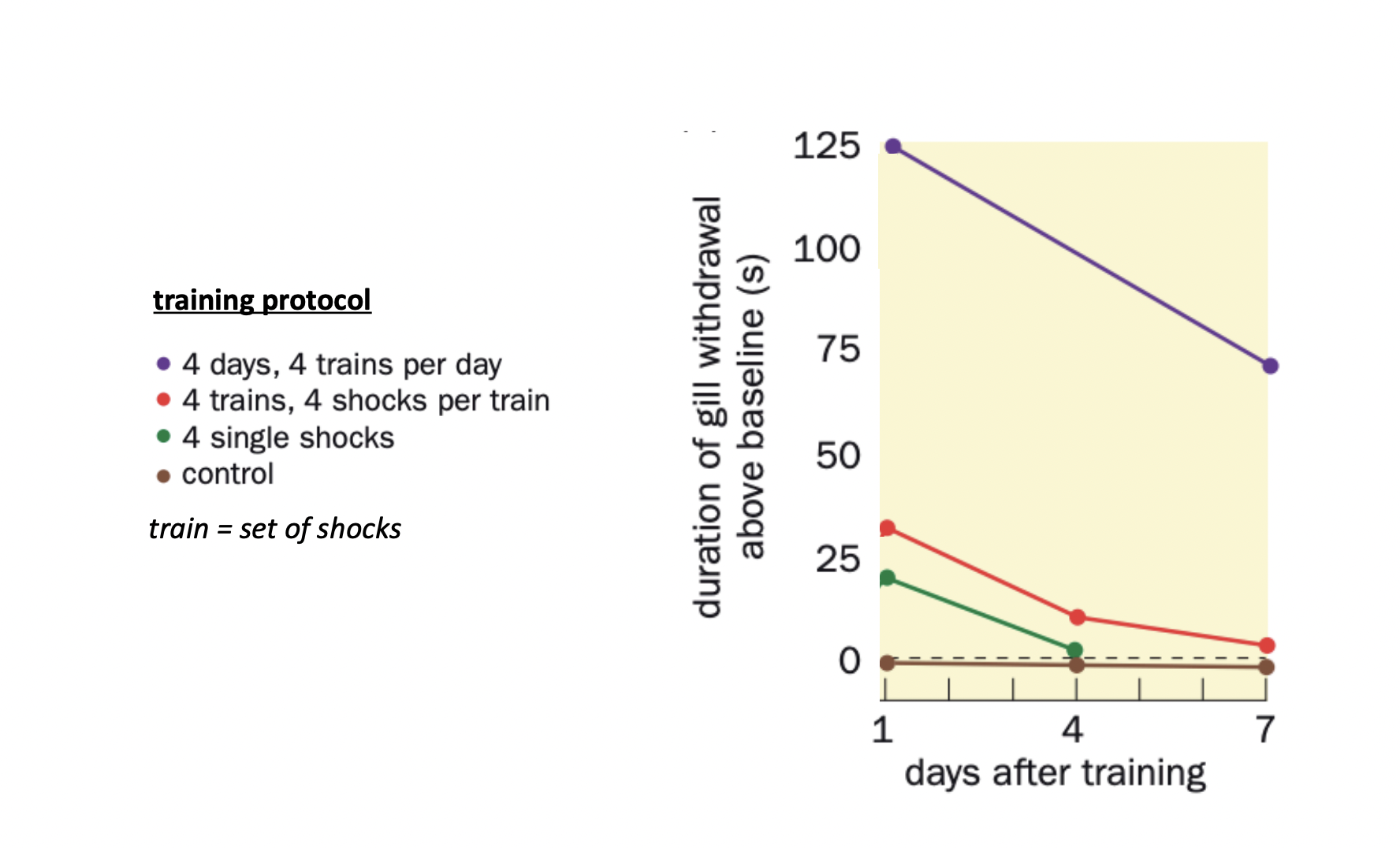
What part of pathway is affected by sensitization
increased transmitter release from sensory neuron
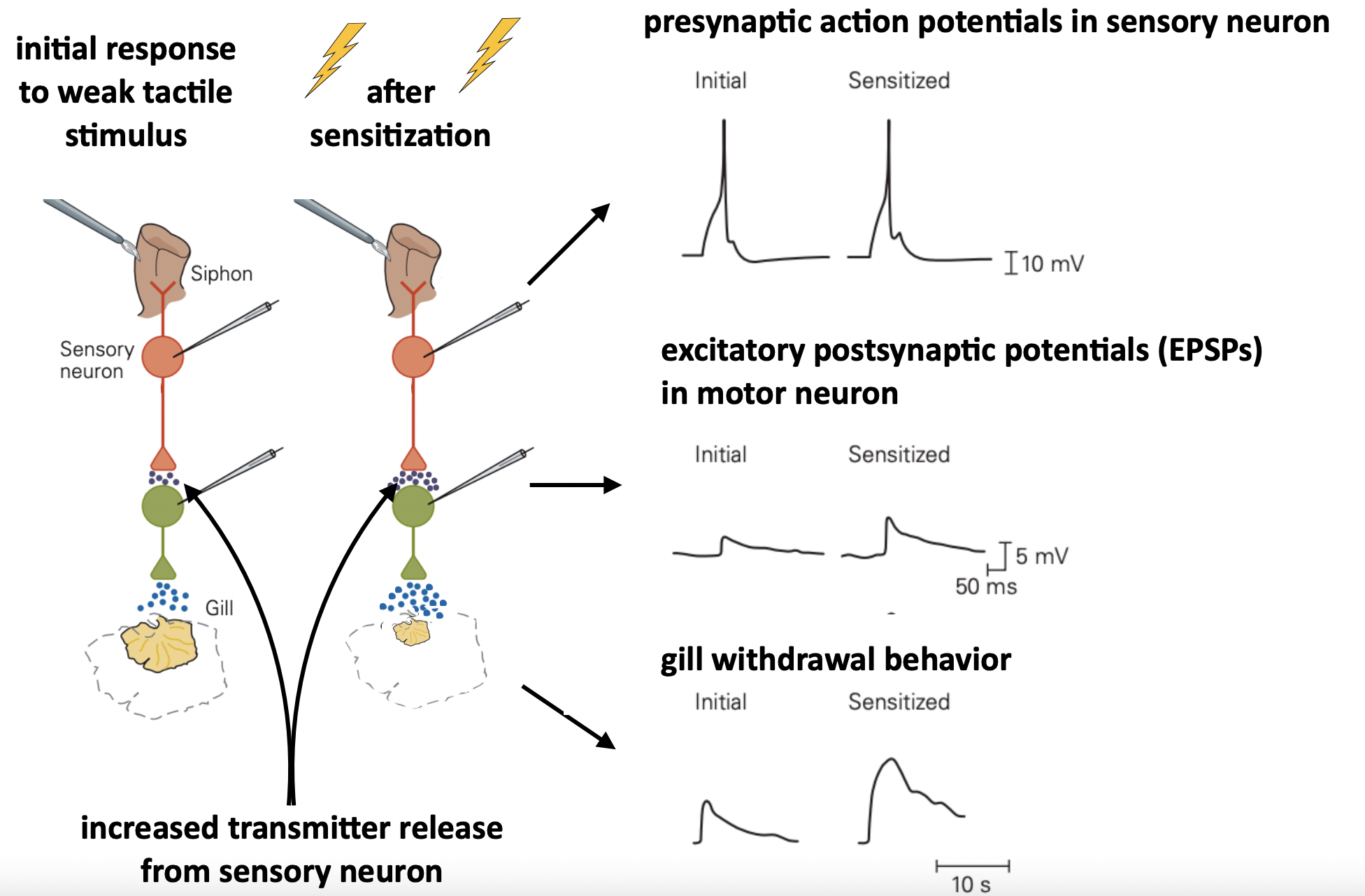
Cellular mechanism pathway for short-term sensitization
tail shock
activates serotonin modulatory neuron
into release of serotonin (5-HT)
sensory neuron detects 5-HT
increased cAMP
increased PKA
increased phosphorylation K+ channels
closes these channels
prolonged action potentials
more Ca++ entry into axon terminal
more glutamate release
excitatory
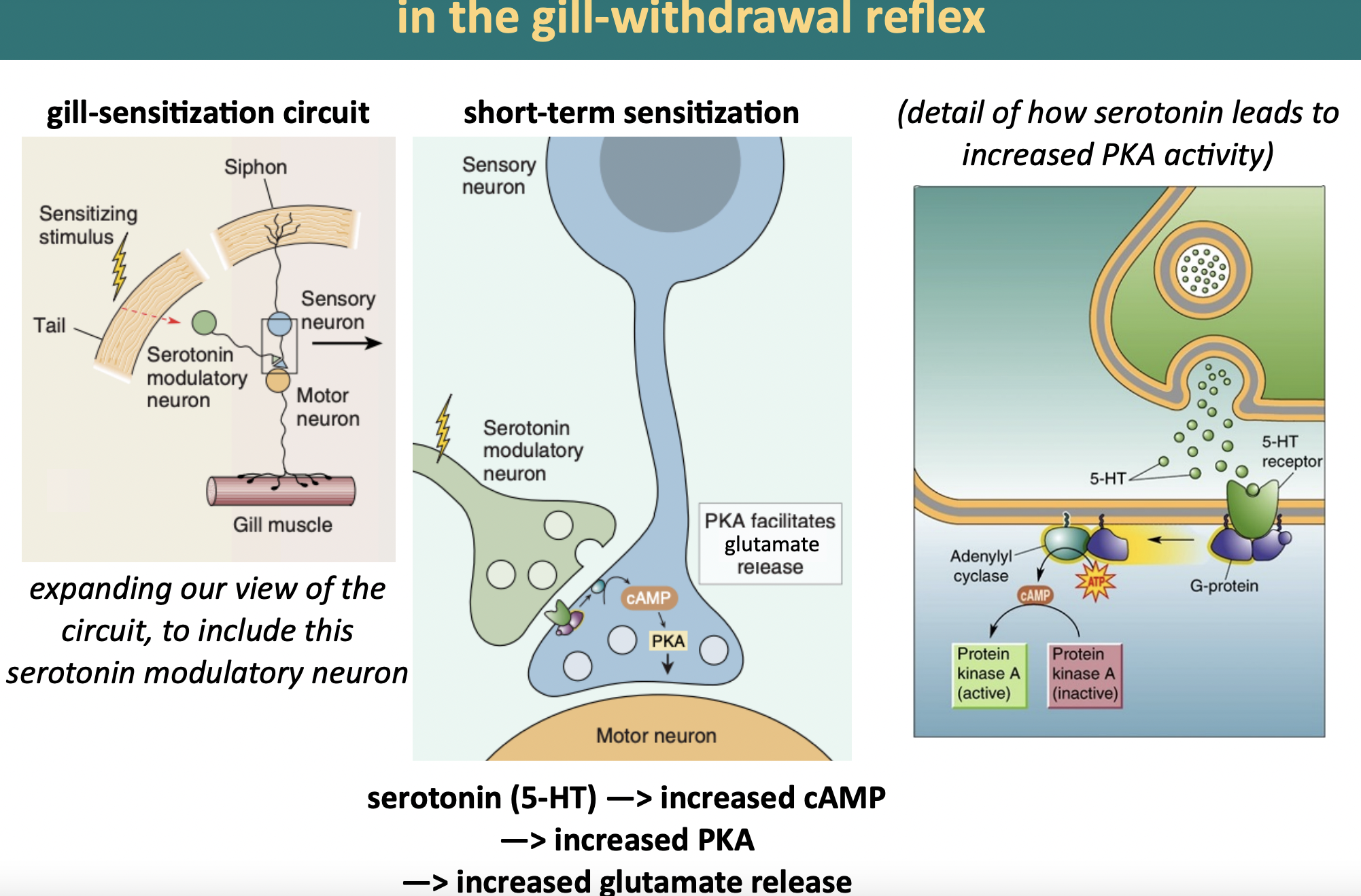
Cellular mechanism for long-term sensitization
everything from short term + PKA
translocated to nucleus
transcriptional changes
synaptic growth
PKA also results information of dendritic spines
that connect to motor neuron
long term habituation and long term sensitization structural changes
habituation: less dendritic spines
sensitization: more dendritic spines
number of synapses per sensory neuron increases or decreases
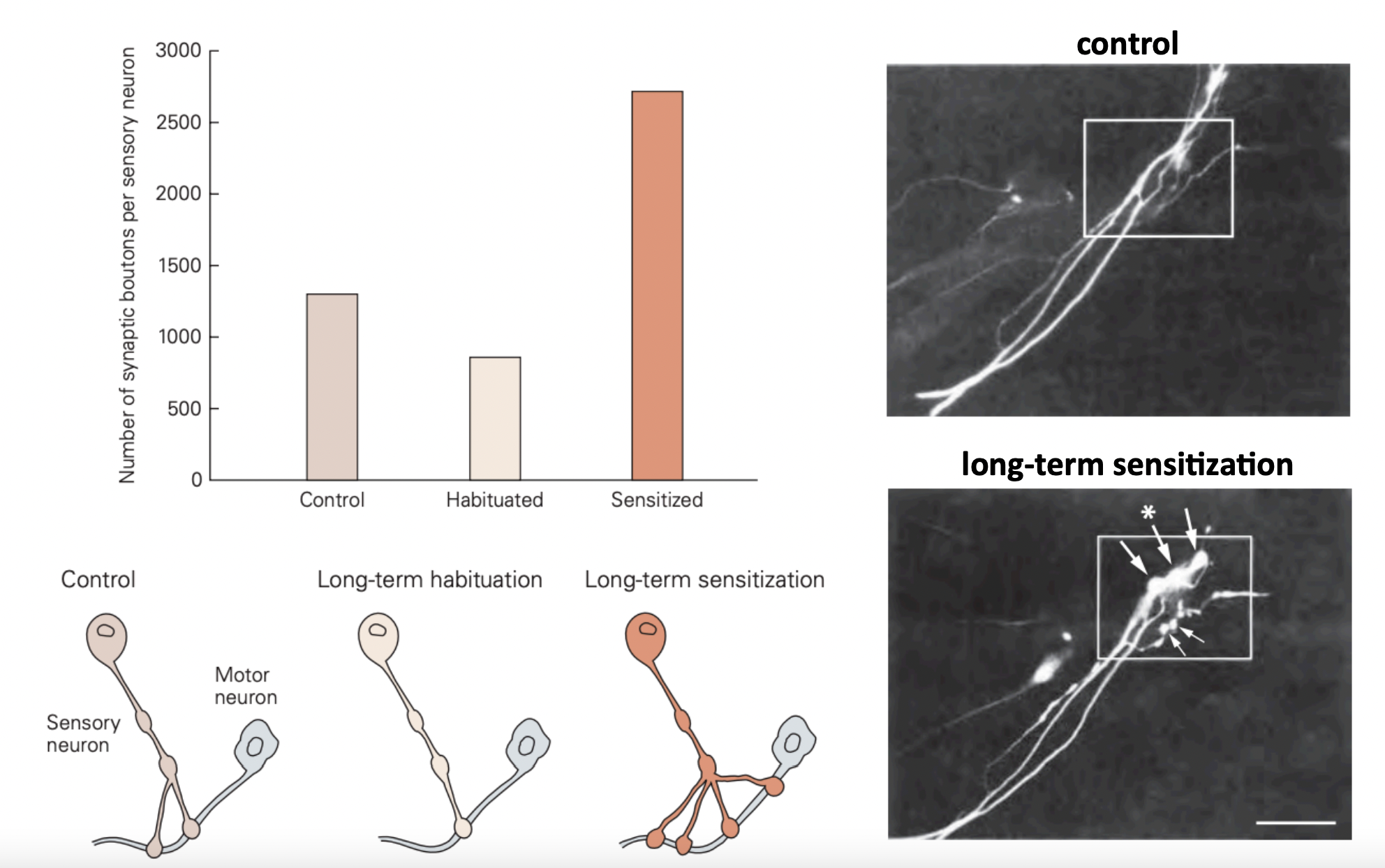
When long-term synaptic facilitation occur at one synapse (due to it being strongly stimulated),
other neurons that are also stimulated (EVEN WEAKLY) will also experience long term synaptic facilitation
1 pulse of serotonin onto synapse with motor neuron A
short term facilitation of synapse with motor neuron A
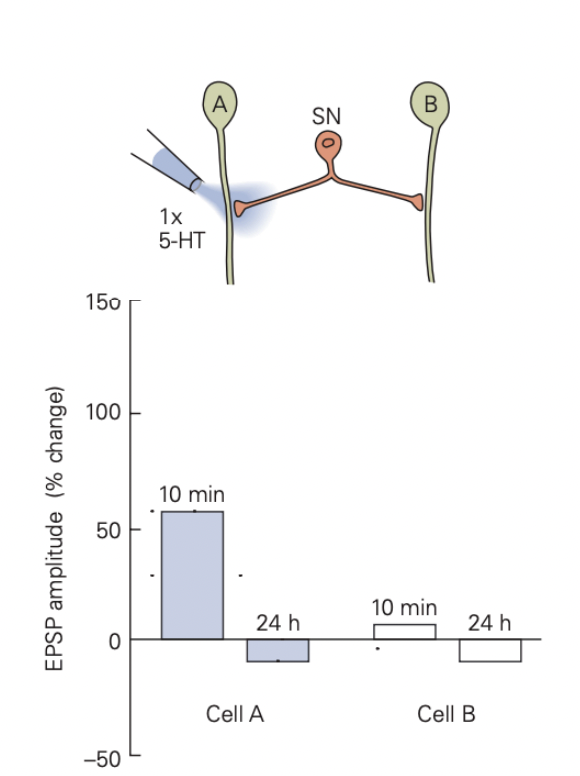
5 pulses of serotonin onto synapse with motor neuron A
produces long-term facilitation of synapse with motor neuron A
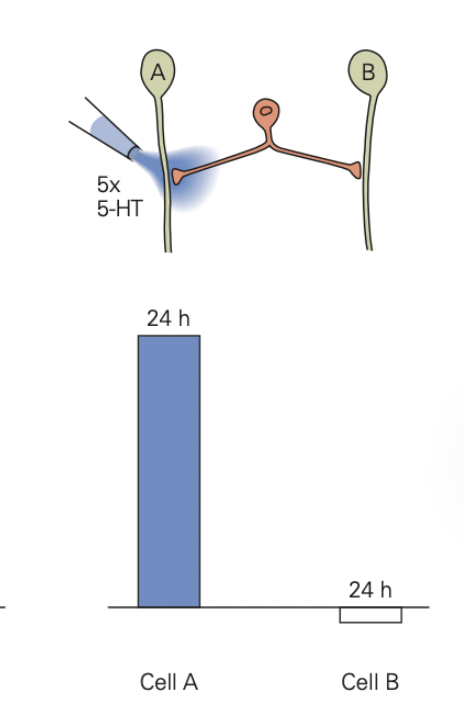
5 pulses of serotonin onto synapse with motor neuron A + 1 pulse onto cell B synapse
produces long-term facilitation of both synapses!
EPSP amplitude on Y axis
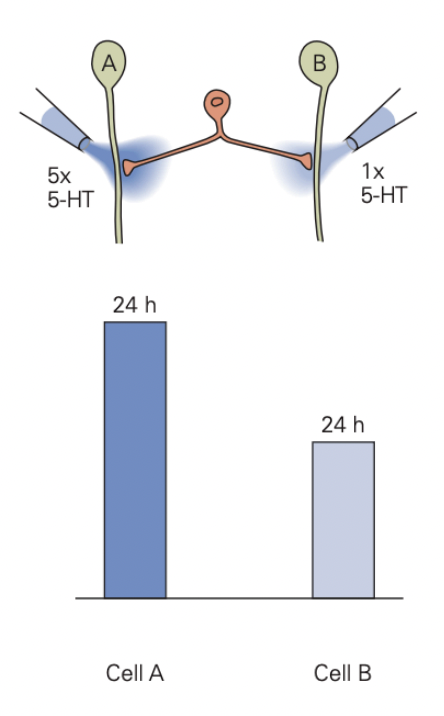
How do new proteins get localized to co-active synapses
new proteins that stimulate synapse growth
which are produced at synapse being strongly stimulated
specifically go to active synapses (INCLUDING WEAK ONES)
to grow more synaptic contacts with motor neuron